The difference and treatment of steel plate delamination and cold brittle cracking after welding (fi
Update:2025-02-06 View(s):194 Keywords :steel plate, steel plate treatment, steel plate cracking
Steel plate delamination and cold brittle cracking after steel plate fire cutting and welding generally have the same manifestation, both of which are cracks in the middle of the plate. From the perspective of use, the delaminated steel plate must be removed. The whole delamination should be removed as a whole, and the local delamination can be removed locally. The cold brittle crack of the steel plate is manifested as cracking in the middle, which some people also call "cracking". For the convenience of analysis, it is more appropriate to define it as "cold brittle cracking". This defect can be treated with remedial measures and appropriate welding technology without scrapping.
1. Steel plate delamination
Delamination is a local gap in the cross-section of the steel plate (billet), which makes the cross-section of the steel plate form a local layer. It is a fatal defect in steel and the steel plate must not be delaminated. Delamination is also called interlayer and delamination, which is an internal defect of steel. Bubbles in the ingot (billet), large non-metallic inclusions, residual shrinkage cavities that are not completely removed or folding, and severe segregation may all cause the stratification of steel, and unreasonable rolling reduction procedures may aggravate the stratification.
2. Types of steel plate stratification
Depending on the cause, the stratification manifests itself in different locations and forms. Some are hidden inside the steel, and the inner surface is parallel or substantially parallel to the steel surface; some extend to the steel surface and form groove-like surface defects on the steel surface. In general, there are two forms:
The first is open stratification. This stratification defect can be found macroscopically on the fracture of the steel, and can generally be re-inspected in steel plants and manufacturing plants.
The second is closed stratification. This stratification defect cannot be seen in the fracture of the steel, and it is difficult to find it in the manufacturing plant without 100% ultrasonic flaw detection of each steel plate. It is a closed stratification inside the steel plate. This stratification defect is brought from the smelter to the manufacturing plant and finally processed into a product for shipment.
The existence of delamination defects reduces the effective thickness of the steel plate in the delamination area to bear the load and reduces the load-bearing capacity in the same direction as the delamination. The edge shape of the delamination defect is sharp, which is very sensitive to stress and will cause serious stress concentration. If there is repeated loading, unloading, heating, and cooling during operation, a large alternating stress will be formed in the stress concentration area, resulting in stress fatigue.
3. Evaluation method of cold cracks
3.1 Carbon equivalent method--Evaluation of cold crack tendency of steel: Since the hardening and cold crack tendency of the welding heat-affected zone is related to the chemical composition of the steel, the chemical composition is used to indirectly evaluate the sensitivity of cold cracks in the steel. The content of alloy elements in steel is converted into the equivalent content of carbon according to its function, which is used as a parameter indicator for roughly evaluating the cold crack tendency of steel, namely the carbon equivalent method. For the carbon equivalent method of low-alloy steel, the International Institute of Welding (IIW) recommends the formula: Ceq(IIW)=C+Mn/6+(Cr+Mo+V)/5+(Ni+Cu)/15. According to the formula, the larger the carbon equivalent value, the greater the hardening tendency of the welded steel, and the easier it is to produce cold cracks in the heat-affected zone. Therefore, the carbon equivalent can be used to evaluate the weldability of steel, and the best process conditions to prevent welding cracks can be proposed according to the weldability.
When using the formula recommended by the International Institute, if Ceq(IIW)<0.4%, the hardening tendency is not great, the weldability is good, and preheating is not required before welding; if Ceq (IIW)=0.4%~0.6%, especially when it is greater than 0.5%, the steel is easy to harden. This means that the weldability has deteriorated, and preheating is required during welding to prevent welding cracks. The preheating temperature should be increased accordingly as the plate thickness increases.
3.2 Welding cold crack sensitivity index
In addition to chemical composition, the causes of cold cracks in low-alloy high-strength steel welding include the content of diffusible hydrogen in the deposited metal, the constraint stress of the joint, etc. Ito et al. of Japan conducted a large number of tests on more than 200 types of steel using the inclined Y-shaped groove iron research test and proposed formulas such as the cold crack sensitivity index established by chemical composition, diffusible hydrogen, and constraint (or plate thickness), and used the cold crack sensitivity index to determine the preheating temperature required before welding to prevent cold cracks. It is generally believed that the following formula can be used for low-alloy high-strength steel with a carbon content of no more than 0.16% and a tensile strength of 400-900MPa.
Pcm=C+Si/30+Mn/20+Cu/20+Ni/60+Cr/20+Mo/15+V/10+5B (%);
Pc=Pcm+[H]/60+t/600 (%)
To=1440Pc-392 (℃)
Where: [H]——Diffusible hydrogen content of deposited metal measured by Japanese JIS 3113 standard (ml/100g);
t——Plate thickness (mm); To——Minimum preheating temperature before welding (℃).
Calculate the welding cold crack sensitivity index Pc of the steel plate of this thickness, and the minimum preheating temperature To before cracking. When the calculation result To≥50℃, the steel plate has a certain welding cold crack sensitivity and needs to be preheated.
4. Repair of cold brittle "cracking" of large components
After the steel plate welding is completed, a part of a certain steel plate cracks, which is called "delamination", and the morphology of the crack. Welding experts believe that it is more appropriate to define the repair process as "the welding repair process of the Z-direction crack of the steel plate". Since the component is large, it is a lot of work to remove the steel plate, and then weld it again. It is very likely that the entire component will be deformed and the entire component will be scrapped, which will cause great losses.
4.1. Causes and prevention measures of Z-direction cracks
Z-direction cracks caused by cutting and welding are cold cracks. The greater the hardness and thickness of the steel plate, the higher the probability of Z-direction cracks. The best way to avoid it is to preheat before cutting and welding. The preheating temperature depends on the grade and thickness of the steel plate. Preheating can be done by cutting guns and electronic crawler heating pads, and the required temperature should be measured on the back of the heating point. (Note: The entire steel plate cutting section should be heated evenly to avoid local overheating in the area contacting the heat source) Preheating can reduce the probability of Z-direction cracks caused by cutting and welding.
4.2. Repair process
① Use an angle grinder to grind the crack until it is invisible, then preheat the area around the repair weld to about 100℃ and then use CO2 welding (flux-cored wire is best). After welding the first layer, immediately tap the weld with a cone hammer, and then weld the following layers, so that the weld must be tapped with a hammer after each layer is welded. Ensure that the interlayer temperature is ≤200℃.
② If the crack is deep, preheat the area around the repair weld to about 100℃, immediately use carbon arc air planing to clean the root, and then use an angle grinder to grind until the metallic luster is exposed (if the temperature of the repair weld is less than 100℃, preheat it again) and then weld.
③ After welding, use aluminum silicate wool or asbestos to insulate the weld for ≥2 hours.
④ For safety reasons, perform ultrasonic flaw detection on the repaired area.
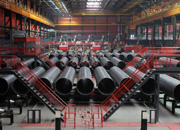 Threeway Steel is known as a professional supplier engaged in manufacturing and distributing a wide range of steel pipe, and our headquarter located the central part of China – Hunan and six associated factories throughout China.
Threeway Steel is known as a professional supplier engaged in manufacturing and distributing a wide range of steel pipe, and our headquarter located the central part of China – Hunan and six associated factories throughout China.
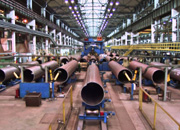 Threeway Steel is known as a professional supplier engaged in designing, manufacturing and distribution of a wide range of steel products with the headquarter located the central part of China – Hunan and six associated factories throughout China.
Threeway Steel is known as a professional supplier engaged in designing, manufacturing and distribution of a wide range of steel products with the headquarter located the central part of China – Hunan and six associated factories throughout China.
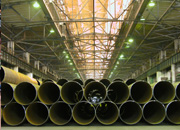 Threeway Steel is known as a professional supplier engaged in designing, manufacturing and distribution of a wide range of steel products with the headquarter located the central part of China – Hunan and six associated factories throughout China.
Threeway Steel is known as a professional supplier engaged in designing, manufacturing and distribution of a wide range of steel products with the headquarter located the central part of China – Hunan and six associated factories throughout China.
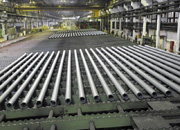 Threeway Steel is known as a professional supplier engaged in designing, manufacturing and distribution of a wide range of steel products with the headquarter located the central part of China – Hunan and six associated factories throughout China.
Threeway Steel is known as a professional supplier engaged in designing, manufacturing and distribution of a wide range of steel products with the headquarter located the central part of China – Hunan and six associated factories throughout China.
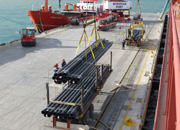 Threeway Steel is known as a professional supplier engaged in designing, manufacturing and distribution of a wide range of steel products with the headquarter located the central part of China – Hunan and six associated factories throughout China.
Threeway Steel is known as a professional supplier engaged in designing, manufacturing and distribution of a wide range of steel products with the headquarter located the central part of China – Hunan and six associated factories throughout China.

